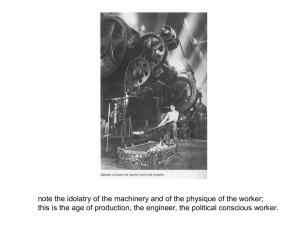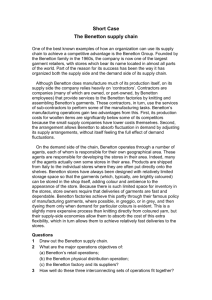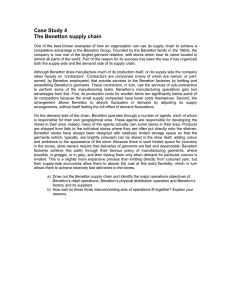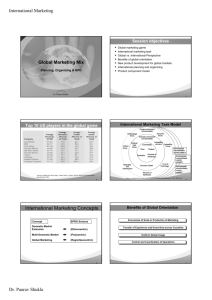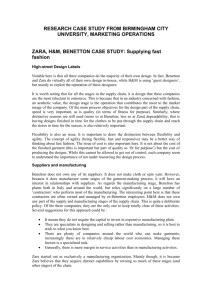note the idolatry of the machinery and of the physique... this is the age of production, the engineer, the political...
advertisement
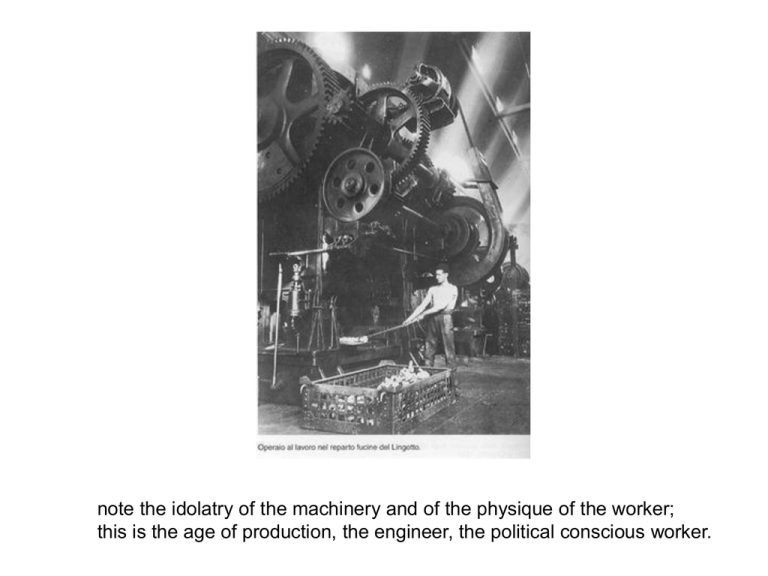
note the idolatry of the machinery and of the physique of the worker; this is the age of production, the engineer, the political conscious worker. note the big investment in equipment and imagine how costly it would be to change the line--which could require shutting it down and retooling it. huge assembly lines, concentrations of thousands of workers for war-time production. Since the market for cars is limited, the middle class being small and workers making too little wages, small-cylinder cars don't go on the market until the 1950s. Workers massing to go into work on time in the 1960s Workers with so much in common in work more readily unionized to gain higher wages and political voice Big strike against the Fiat Mirafiori works during the "red years" 1969. By the late 1960s, workers were organized in strong unions, with Communist party backing, as you can see from the slogans and flags. The Fiat Company opens to the USSR by setting up a plant at Togliattigrad in 1970 Fiat sets up plants elsewhere too, here in Brazil, to take advantage of emerging markets and low costs locally. As the labor movement at Fiat weakens, the Communist party, hear represented by its leader, Enrico Berlinguer, tries to give it support in the occasion of negotiations over contracts. The head of the General Confederation of Labor, Lama, also speaks to the workers during the 35 day strike of 1980, which the workers lose. This strike marks the end the strong labor movement at Fiat. 1986: Robots making cars instead of men Note how much has been robotized and mechanized, and the change in the workers' garb, as if they were clerks instead of line workers. note how scientific production has become, how skilled the workforce, the distance from the heroic line worker of the 1920s. Originally Benetton produced in and around Treviso, the northeastern Italian town where the family firm was founded. As its market grew, and the firm employed more and more specialized communications technologies, it was able to outsource production to small workshops in Italy and more and more peripheral areas. The factory disappeared--and so did the workers. Post-Fordist products put a big emphasis on life style. Notice how the image, produced by the company, emphasizes the chic life-style of management, to which the very chic-looking factory is a mere backdrop. There is no sweat anywhere. And no labor. And no locality. Just image. Company publicity highlights the communication functions of the industry. Headquarters holds the information-communication-design functions of the business. Labor occurs elsewhere. Communication enables the company to have precise figures directly from the stores and, in turn, to communicate directly to manufacturing sites. The stock passes directly from the sites to the stores. That way, style changes can occur rapidly and there is no need to hold costly inventory. Benetton emphasizes Italian design and manufacturing traditions. This emphasis is important to giving meaning to products that are always changing, infinitely adaptive to a global public, and lacking the concreteness that consumer durables like automobiles seemed to have. Between management and distribution, the phase of production seems to have disappeared. The biggest investment of post-fordist capitalism is in distribution systems. These use relatively small work forces. And the images would make it seem that they virtually operate themselves. Once more, publicity shots emphasize the ready-to-wear, just-in-time nature of post-fordist production. There is no assembly line here. The garments are, as if, ready-made, the colors, the styles, the cut, at the command of the consumer. Benetton stocks what management, drawing on local store reports, thinks the traffic will bear. Benetton in this chic place caters to the tourist trade in downtown Paris. It's stock would be subtly different--in color, cut of jeans, etc--from the Benetton on Madison Avenue or the Benetton which opened, say, in the former German Democratic Republic town of Eisenach in 1992. United Colors of Benetton moved right into eastern Europe after the Wall fell. It outsourced production to places like Albania and it set up shops, practically indistinguishable from those in western European centers, on the main streets of the capital cities, then in smaller and smaller centers. Post-fordist consumption segments production, seeming to tailor it to local tastes. At the same time, it uses networks to offer the same product across national and international lines, catering to a wide middle class--in the case of Benetton. Who knows where the products for this store were manufactured in Slovakia, or in Albania, or in Istanbul? Benetton publicity is definitely iconoclastic. It embraces globalization. Posters by Oliviero Toscani want to make a statement to the effect that United Colors of Benetton are for the whole world, that they unify, across race, in spite of disease, notwithstanding religion. Publicity is socially conscious, as if the product itself were socially conscious, pro-environment, a contribution to the unity of humankind. Benetton, in sum, unites the world in life style, while recognizing difference. The problem of unequal standards of living seems to dissolve. Remember that advertising had a radicalizing function in the 1960’s A link to an article from: Corriere della Sera, October 18 1998, Child labour for Benetton in Turkey



